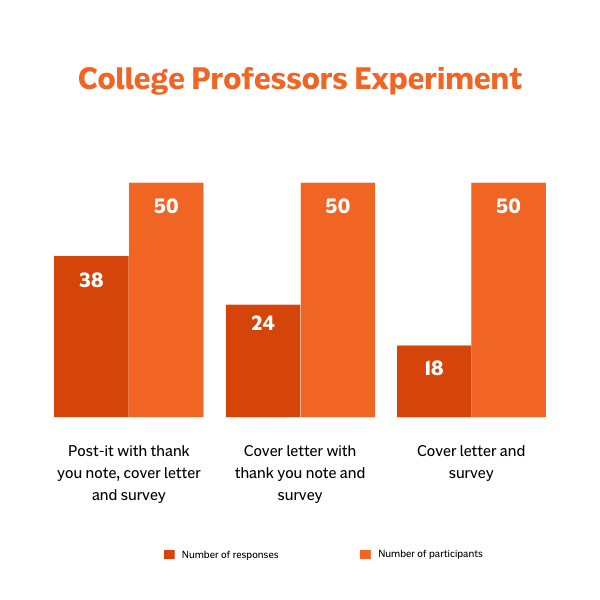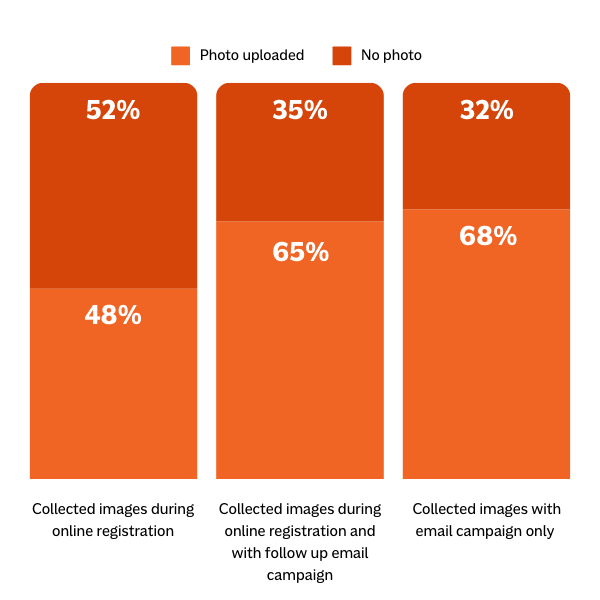One of the challenges in event management is getting guests to register. Whether for a compulsory company conference in Wolverhampton or the recognition trip of a lifetime to Australia, the process of getting each guest to register and provide all the necessary information in a timely fashion can be long and drawn out.
Why? Because it’s uninspiring.
Guest registration is usually the first step in a guest’s event experience and the first opportunity to create an impression of the event itself and what to expect next.
Sadly, with timelines to meet and a plethora of information to collect and relay, this first experience can often overlook its potential to inspire and become an email full of words, instructions, do’s, don’ts, and demands. Hopefully a link to more information and the critical ‘register’ button. Unfortunately, this approach does little to excite the guest and motivate their registration, let alone generate any kind of anticipation or purpose in the event they’re to attend.
Here at BI WORLDWIDE, we like to talk to our clients (and anyone that will listen), about behavioural economics. That’s because we have proven success applying its principles to our solutions to inspire behaviour change and deliver measurable results for our clients.
Here are five actionable ideas you can use in your next event to improve the impact of your guest registration experience.
VIVIDNESS EFFECT
People remember things that are graphic or dramatic.
It’s easy to see the obvious use of vividness in events when it comes with Hollywood action movie budgets! However, (check left, check right) between you and me, you don’t need to have a huge budget to make the vividness effect work for your event. Really, vividness is about getting your guests to pay attention to your event and then keeping that attention.
Guest registration is one area where vividness can be used to great effect without costing a fortune. It’s not just about pretty and colourful, although this can play a role in making invites and websites attractive to initially grab that attention. But triggering an emotional response is more likely to keep that attention.
Humour and disruption from the expected are great ways to capture your guest’s attention, keep it, and elicit positive emotional responses that they’ll associate with your event.
Make sure your headline is eye-catching, whether that’s the subject line of your email or the title of your webpage. For example, the subject ‘Are you ready for the party….after this year’s Company Conference’ is more likely to attract people to open an email than ‘Company Conference 2025’.
Adding in creative touches, imagery that elicits the feelings you want to convey, e.g. this is going to be fun, and even a small amount of humour can all help to grab your guest’s attention and keep it.
Now what you do with all that attention now you have it….
CHOICE ARCHITECTURE
People don’t make any choice at all when faced with too many choices.
Removing choices may seem like a strange thing to suggest in today’s world of hyper-personalisation but it actually allows you to get to the personalising part faster. We limit the choices in order to steer guests towards the actions we want them to take; we want to give them a choice they’re happy to make. Telling people to take the stairs because it’s better for you will see only a few extra people taking those stairs. Turn them into a piano that plays a note for each step and those numbers substantially increase without anyone saying a word. Although we can’t create a piano stair during registration, we can look at the choices that we’re giving our guests.
The huge amount of information found in most invite emails is partly a genuine want to impart what’s considered all relevant information to the guest, but also a desire to head-off potential questions that could come from the guest and take up time. There’s a slight assumption that every guest is going to call or email asking multiple questions if all this information isn’t provided up front. What’s happening is that this time-saving exercise is backfiring, and the deluge of text is making it more difficult for guests to find the answers they want and delaying their registrations, leading to multiple questions and multiple chase emails.
The only choice we’re giving guests is: read this long email and then register for the event. And, unsurprisingly, that’s not a choice most will want to make immediately upon receiving this email.
The huge amount of information found in most invites:
- Personal invite note from the MD
- Information about the event
- Information about what can be found on the event website
- Log-in Information
- Flight information
- How to fill in the registration form
- Who, how, and when to contact emails
- What happens if you don’t register
- Registration close date
- What you need in order to register:
- Email address to access the site
- Personal information including any dietary / medical requirement
- Full passport information
- A photograph of you for the onsite app (in PNG or JPG format)
Taking a step back, what’s the one thing we want a guest to do when we invite them to register for an event? Register! We want them to choose to tell us whether they will or won’t be attending the event. All the other information is necessary and needs to be gathered but, essentially, to begin with we need to know whether they’re planning to attend or not. If all a guest had to do was press a big button with yes or no on it, rather than gather multiple bits of information, what would the response rate be like?
Give guests a maximum of three choices:
- Yes, I can attend, and I want to register now
- Yes, I can attend but I need more information
- No, I can’t attend
Stripping away all the layers of information surrounding the original invite, guests can see three simple choices that they can respond to immediately. There’s no need to go away and think about it or find vital bits of information before proceeding (if you don’t have them on hand). And those who can’t attend can easily let us know without having to read reams of text before giving up and deleting the email.
This leads us into making it easy.
HEURISTICS AND BIASES
People prefer to do as little thinking as possible!
Everyone has little shortcuts; things they do automatically without being consciously aware of doing them.
These shortcuts (or heuristics) which have evolved with us mean we’ll take the same route to work, get coffee at the same place and ignore certain things because we already know the outcome. And along with those heuristics that mean we don’t have to make decisions in every moment of every day, we naturally develop biases as well; biases that, when confronted by a decision to make, most of our natural heuristics and biases jump up and shout, ‘this is going to take a long time and be boring’.
Although some research suggested that average attention spans were decreasing, the advent of mobile responsive technology seems to be reversing that trend. The next link in the chain is to ensure that your guests can make use of this mobile responsive technology and provide them with a simple and easy way of registering so that those heuristics and biases don’t get a chance to jump in and stop your guest from registering there and then.
Make it easy for them to access your registration site and put all that really important information from the invite email on the website. Not on the front page but on clearly marked tabs or links, e.g. Terms & Conditions, GDPR, Flight Requirements, FAQs. This can all be made accessible before registration even begins, again increasing the chances of guests registering straight away on receipt of their invite, as they have already had a chance to explore all the information.
So, we’ve captured their attention, we’ve given them choices they’re happy to make and made it easy for them to do so. Job done? You could stop reading here and still see a marked improvement in your registration rate and experience, but we thought we’d share a couple more theories that can have a decided impact on your guest registration.
Give them goals.
GOAL GRADIENT THEORY
People run faster the closer they get to the finish line.
We’re naturally disposed to setting goals, and the closer we get to a goal, the more effort we put into meeting it. We want to give guests small goals. Specific, measured, relevant and achievable. Let them see where they are in terms of a completed registration; let them see what’s coming next.
We like to think about it in terms of Post-it notes; there’s a reason an estimated $1 billion worth of Post-it notes is sold every year.
Randy Garner, a professor of behavioural science at Sam Houston State University conducted a series of experiments in which he tried to persuade people to fill out a survey.

In one experiment, 150 college professors were sent surveys about conditions at their university. Fifty received a survey with a Post-it attached to a cover letter. “Please take a few minutes to complete this for us. Thank You!” said the Post-it.
Another 50 got a survey with a similar handwritten message on a cover letter. The remaining third received a cover letter and survey.
The results were clearly in favour of the Post-It. Seventy-six percent of the sticky note group sent back their survey, compared with 48 percent of the handwritten group and 36 percent of the control group.
Other experiments replicated the result: Over and over again, people were more likely to do the work when they were asked on a Post-it note. If the work was particularly complicated, the study found it helped a bit to personalise your Post-it even more, by adding your name, for example.
We’re currently treating guest registration as a Big Hairy Audacious Goal (BHAGS – as our American colleagues would say), when we should be thinking more like Post-it notes.
Small steps, small personal notes requesting actions.
This also lends itself naturally to communication campaigns prior to the event to build anticipation and keep the excitement going. By offering smaller goals (requests for information), these can be met by the guest and often exceeded.

The idea behind setting smaller goals or splitting out some of the registration tasks to ensure a more favourable response is further reinforced by research carried out by a software company which has created a facial recognition programme to register guests and print their badges onsite at large scale events.
It found that it was 20% more successful at obtaining photos post-registration than during. By receiving an email post-registration with a simple ‘upload your photo here’ link they had a 68% uptake, compared to only 48% during registration.
LOSS AVERSION
People feel the pain of a loss more strongly than the pleasure of a gain.
Loss aversion is one of the simplest behavioural economics effects to understand. It’s also one of the most over-used, and that makes it tricky. Basically, we’re more likely to choose an option that avoids a loss over an option that promises a gain of the same or greater value.
People who have goods they want to sell latched on to this concept a long time ago. These days, consumers are inundated with emails hoping to play on this effect – 50% off ends this Friday, Last Chance, Don’t Miss Out…
We’re also used to those same emails being sent the next week and the one after. We now know that the so-called last chance, isn’t our last chance and so the effect of loss aversion begins to disappear and instead we see a different effect – no option being selected at all. If someone thinks “I can always do this tomorrow,” they have absolutely no reason to do it now.
This is regularly the case with registration. So, we want to utilise the loss aversion principle, but not in the obvious way that we’re now all so distrustful of, but by presenting guests with an option that’s promoting something to them that won’t be available if they don’t act today. We want them to activate their own loss aversion.
What we want to say to them is “All you have to do is register and you get a “<INSERT TANGIBLE, IMMEDIATE REWARD>”.
The reward doesn’t even need to have a monetary value, it just has to be something that’s of value to your guests so that they’ll feel the loss if they don’t achieve it.
Guest Registration Reimagined
Grab and Keep Guests’ Attention + Remove Choice + Make it Easy + Set Attainable Goals + No Regrets
=
HAPPY REGISTERED GUESTS
Guest registration can only benefit from applying behavioural economics, which, when coupled with a communications plan based around easy achievable goals, will see an increase in responsiveness to requests and hopefully guests who don’t see registration as quite as much of a chore as they previously did.
Let’s talk
Want to know more or looking for support? Speak to one of our expert team!
